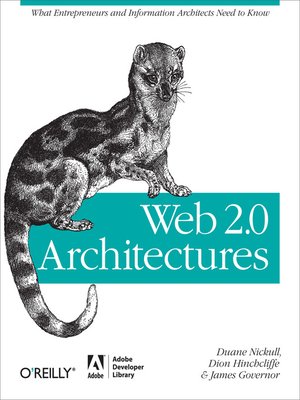
Sign up to save your library
With an OverDrive account, you can save your favorite libraries for at-a-glance information about availability. Find out more about OverDrive accounts.
Find this title in Libby, the library reading app by OverDrive.



Search for a digital library with this title
Title found at these libraries:
| Library Name | Distance |
|---|---|
| Loading... |
Web 2.0 is more pervasive than ever, with business analysts and technologists struggling to comprehend the opportunity it represents. So what exactly is Web 2.0 — a marketing term or technical reality? This fascinating book finally puts substance behind the phenomenon by identifying the core patterns of Web 2.0, and by introducing an abstract model and reference architecture to help you take advantage of them. In Web 2.0 Architectures, authors Duane Nickull, Dion Hinchcliffe, and James Governor — who have 40 years of combined experience with technical specifications and industry trends — examine what makes successful Web 2.0 services such as Google AdSense, Flickr, BitTorrent, MySpace, Facebook, and Wikipedia work. The result is a base of knowledge that developers, business people, futurists, and entrepreneurs can understand and use as a source of ideas and inspiration. This book reveals:
If you want to understand what makes Web 2.0 tick, and how it will enhance your business, Web 2.0 Architectures takes you right to the core.







